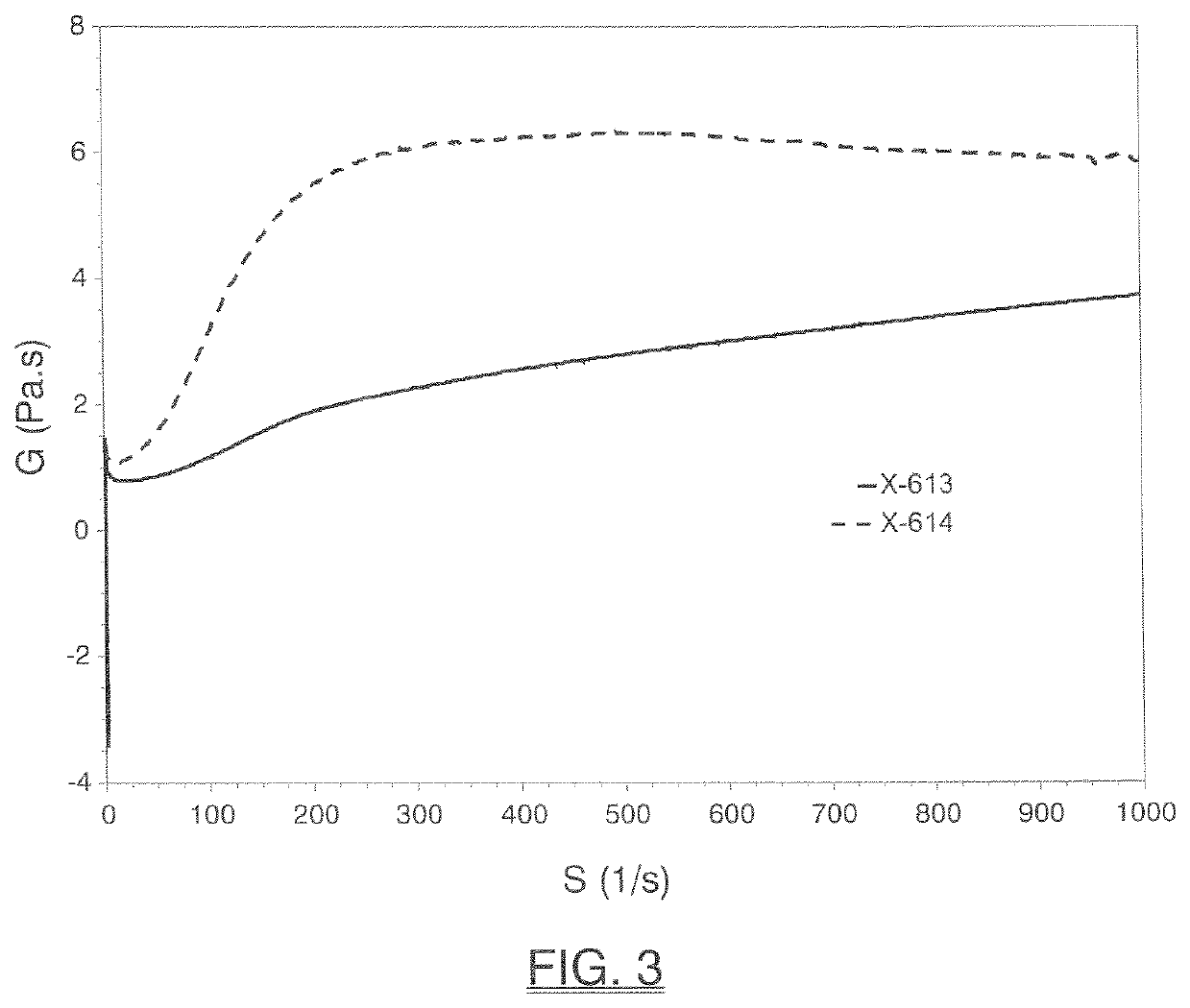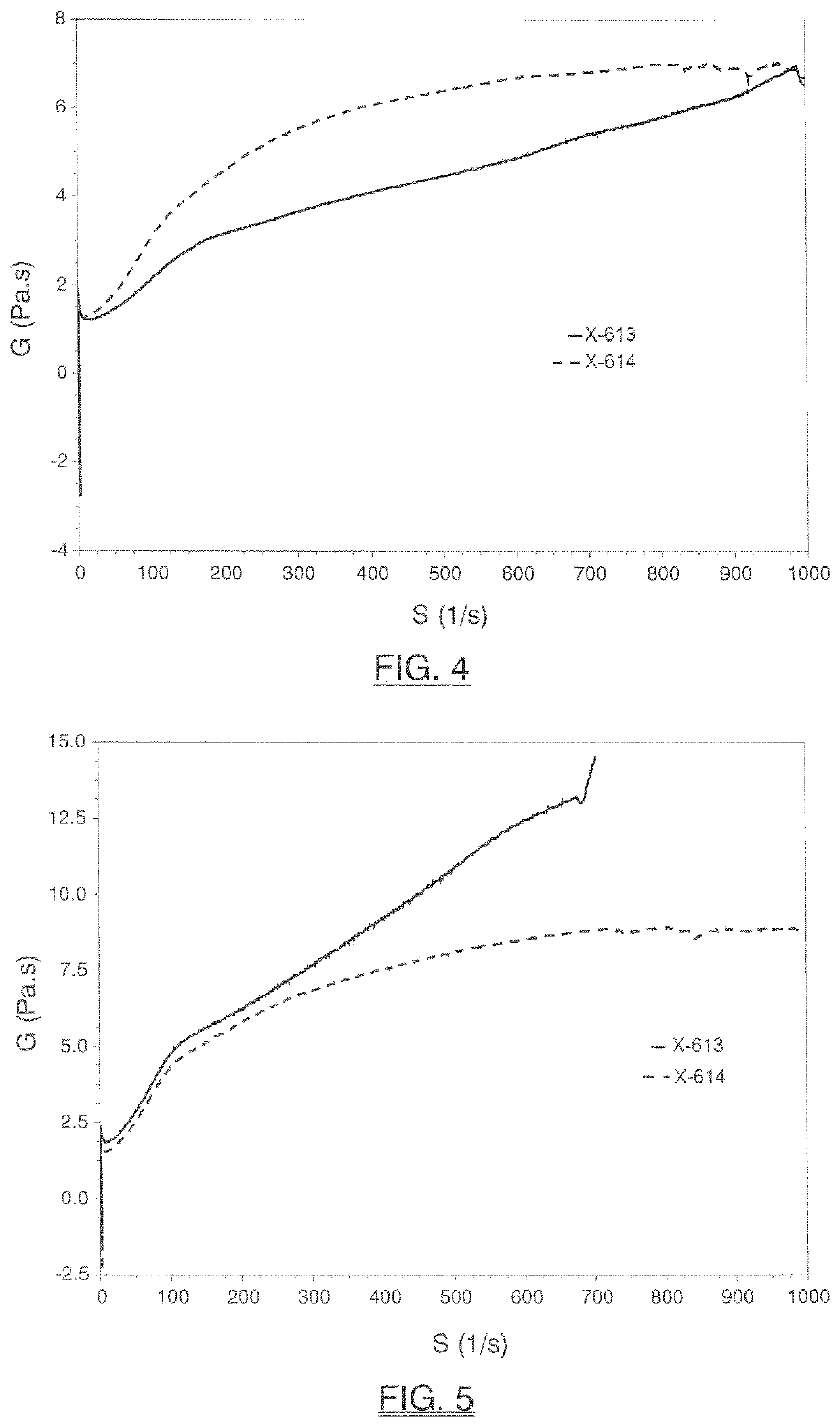Monobenzoate analogs useful as plasticizers in plastisol compositions
a monobenzoate and plasticizer technology, applied in the field of nonphthalate monobenzoate analogs, can solve the problems of not always giving the performance desired in vinyl compositions, increasing regulatory pressure, and slowing down speed, and achieves the effects of improving viscosity, reducing voc content, and improving performance and handling properties
- Summary
- Abstract
- Description
- Claims
- Application Information
AI Technical Summary
Benefits of technology
Problems solved by technology
Method used
Image
Examples
examples
Experimental Methodology
Plastisol and Vinyl Preparation
[0146]The plastisols were prepared in a Hobart Model N-50 mixer. A ten minute mix at speed one (1) was used. A high speed disperser was also used to prepare other plastisols evaluated employing a ten minute mix at 1000 RPM's. All of the plastisols were degassed at 1 mmHg until as air free as possible.
example 1
stisol Evaluations (HMCA Benzoate)
[0163]Examples 1, 2 and 3 show the efficacy of the inventive monobenzoate analogs utilizing a basic starting plastisol formulation described below:
[0164]
Basic Plastisol FormulationMaterialPHRDispersion Resin, K76, Geon 121 A100Plasticizer 70Ca / Zn stabilizer, Mark 1221 3
Processability
[0165]The inventive monobenzoate analog HMCA benzoate (X-614) was compared to 3-PPB (X-613). HMCA benzoate is very similar in structure to 3-PPB, with only the addition of a methyl group.
[0166]FIG. 1 and Table 3 below shows initial, 1-day, 4-day, 7-day, 2-week or 4-week viscosity data obtained for HMCA-benzoate (X-614), which compares favorably to 3-PPB (X-613) and reflects unexpectedly better viscosity stability.
[0167]
TABLE 3Brookfield Viscosity MeasurementsViscosity (mPa · s)X-613X-614InitialTemp (° C.)23.023.1Viscosity (mPa · s)7781042 1-DayTemp (° C.)23.523.4Viscosity (mPa · s)13361380 4-DayTemp (° C.)23.723.5Viscosity (mPa · s)19801642 7-DayTemp (° C.)23.523.6Viscos...
example 2
stisol Evaluation with 2-Phenylethyl 2-Phenylacetate
Processability
[0177]The basic 70 phr plastisol formulation of Example 1 was also used in this evaluation.
[0178]FIG. 10 shows comparative initial, 1-day, 3-day, 7-day, 2-week, 3-week and 4-week viscosities for 3-PPB (X-613) and 2-phenylethyl 2-phenylacetate (X-616). X-616 is similar in structure to X-613, with the ester group shifted down one position further away from the aromatic ring. The data shows that the initial viscosities of X-616 and X-613 are similar, while the viscosity aging of the inventive X-616 plastisol is less than that of X-613. X-616's viscosity stability over time was much better than that obtained for 3-PPB, which provides an advantage in plastisol formulations. X-616's viscosity stability was not quite as good as that obtained for HMCA benzoate in Example 1, above, but it was still much improved over 3-PPB. Brookfield viscosity results are also shown in Table 4, below.
[0179]
TABLE 4Brookfield Viscosity Measurem...
PUM
| Property | Measurement | Unit |
|---|---|---|
| wt. % | aaaaa | aaaaa |
| wt. % | aaaaa | aaaaa |
| angular frequency | aaaaa | aaaaa |
Abstract
Description
Claims
Application Information
 Login to View More
Login to View More - R&D
- Intellectual Property
- Life Sciences
- Materials
- Tech Scout
- Unparalleled Data Quality
- Higher Quality Content
- 60% Fewer Hallucinations
Browse by: Latest US Patents, China's latest patents, Technical Efficacy Thesaurus, Application Domain, Technology Topic, Popular Technical Reports.
© 2025 PatSnap. All rights reserved.Legal|Privacy policy|Modern Slavery Act Transparency Statement|Sitemap|About US| Contact US: help@patsnap.com



